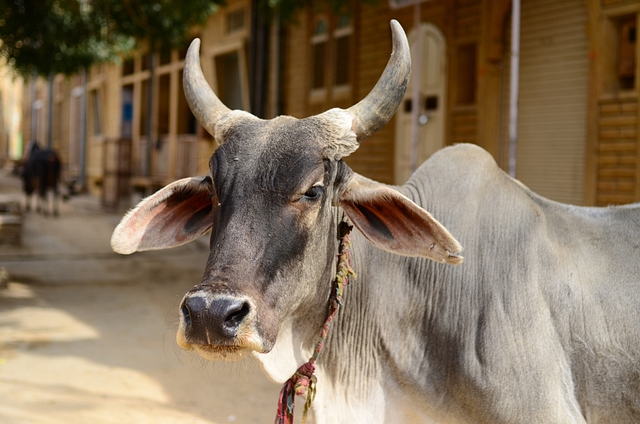
On Cow Slaughter
A statistical-satirical look at how the abhorrent issue of cow-slaughter can be settled.
Cows are sacred; cows are holy. The more emotional among us have compared them to our mothers, and after all, who would eat their mother? Today, we have a serious gap in the law, the Constitutional intent, and its implementation. Article 48 of the Constitution creates a State Directive to prohibit cow slaughter. In many States, killing a cow is punishable by up to ten years in jail. And yet, India is the second largest exporter of beef in the world. How can this be? We must urgently close these loopholes, and reflect the will of the majority that cows must not be slaughtered. Or at least we need to have a national debate on a full understanding of the facts.
Now let us examine the current status quo. Today, there are 12 crore female cows (not counting buffaloes) in India, of which 7.8 crores are milk cows. This number varies by a few percentage points in each census but is stable. In other words, the number of cows in India is at saturation point and has been for some time.
The basic fact of life is that every one of those 7.8 crore cows has to get pregnant and give birth to a calf in order for it to produce milk, which is sold around at Rs 40 a liter today. In other words, 7.8 crore calves are born each year. Half of them are male calves, which are killed within three months for beef (or left to starve). Of the remaining 3.9 crore calves, which are female, around 20% are used to replace old cows that no longer give milk. The other 80% are also killed (remember, the total cattle population in India is more or less stable). In other words, the beef industry in India is made up of 7 crore surplus calves from the milk industry, plus 80 lakh old cows that don’t produce milk anymore
.
Let us look at this in another way. Each cow produces an average of 7 liters milk a day, for ten months of the year, for every calf it produces. That work out to around 2000 liters of milk produced per calf. Let’s say you are an average middle-class family of four in India, and consume 2 liters of milk a day. For every three years of milk consumption, today you are responsible for killing a calf indirectly. This is, of course, unacceptable to most Hindus.
Clearly, this is an issue that has been swept under the carpet for far too long, and we must take a stand on this. We must immediately put an end to all this killing. The only ethical way to produce milk is to take all these surplus calves and old cows and keep them in goshalas for their entire natural lives of around 15 years. A nationwide building of goshalas must happen, because for every milking cow, over its working life you will have ten surplus animals that must be housed in goshalas (and segregated by sex to not allow them to breed).
It is easy to monitor the safety of cows if we set our mind to it. We can create a cow Aadhar scheme, where each animal is given a Unique ID number at birth, and obviously the Supreme Court will not raise any privacy concerns unlike for humans. Dairies can be held responsible on average to maintain one calf in a goshala for 15 years for every 2000 liters of milk that they produce (this would have the added benefit of removing all adulteration of milk, after all, which dairy wants to show higher milk production when they have to account then for the higher number of calves?). The Cowdhaar scheme would ensure that all these cow goshalas keep a proper census of the surplus calves and that they are properly looked after.
Of course, simple math shows that to fund this, the price of cow milk will increase to about fifteen times higher than it is today. In other words, it will be 600Rs a liter. But no price is high enough, in the eyes of a large number of Indians, to protect Indian cows, which are after all our national treasure. I am confident that many of us will agree to give up our daily cow milk, butter, ghee and curd to fully implement a ban on beef.